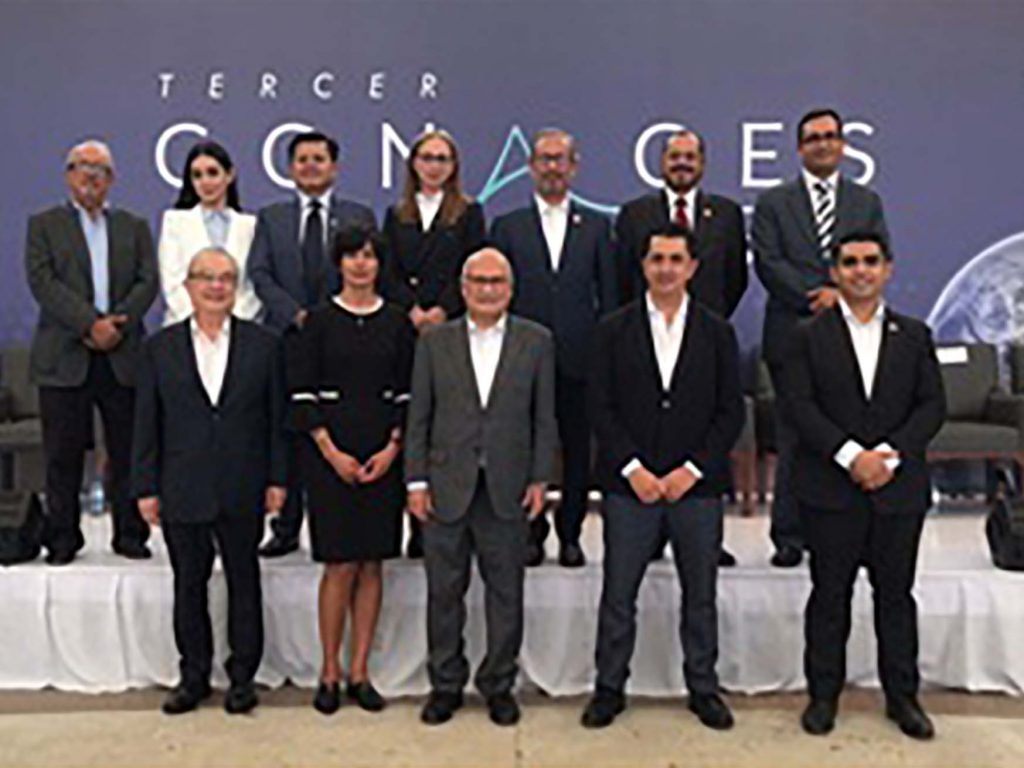
Space news from Mexico and more
Announcement of NASA Collaboration with Mexico in the “Aztechsat” Satellite Project
09/03/2022

Mexican universities will collaborate with the Mexican Space Agency (AEM) and the United States Space Agency (NASA) in the “AztechSat Constellation” project, developing new generation satellites for the priority task of caring for marine fauna and our planet.
This was reported jointly by the AEM, a decentralized body of the Secretariat of Infrastructure, Communications and Transportation (SICT); The National Autonomous University of Mexico (UNAM); the Aeronautical University in Querétaro (UNAQ); The Pan American University (UP); the Popular Autonomous University of the State of Puebla (UPAEP); and the Polytechnic University of Querétaro (UPQ).
The announcement was made at the event called “AztechSat -Kick-off Constellation”, held within the framework of the Third National Congress of Space Activities (CONACES 2022), in which Salvador Landeros Ayala, General Director of the AEM, widely congratulated the talent of our country that will participate.
“It is a great source of pride that the performance of Mexican talent in the development of Nanosatellites has already been described as similar to that of many NASA engineers by that institution, which motivates us at AEM to continue redoubling efforts in the training of young human capital. ”, he expressed.
“AztechSat will have technological relevance with the development of a marine animal monitoring system; a unique institutional collaboration with four more universities, two space agencies, and opportunities for the training of highly specialized human resources”, considered Dr. William Lee Alardín, Coordinator of Scientific Research at UNAM.
On behalf of the same institution, José de Jesús González González, personal representative of the Rector Enrique Graue Wiechers, congratulated this project and the way in which Mexico has historically fulfilled its commitments to the space issue and the avant-garde education of its youth. .
For his part, the Rector of UNAQ, Enrique Sosa Gutiérrez, pointed out: “This will be the first constellation in which we participate as a state, and it is a pride that our public universities are taking the lead in a project of such significance! The importance of our participation is that this will support the Artemisa project, which will take the first woman to the Moon, and, certain of its success, we do not want Querétaro to be left out of this sum!”
At the time, on behalf of the UP, the Vice Chancellor of its Aguascalientes campus, Ramiro Velázquez Guerrero, said that the key factor for aerospace development is mutual cooperation, since this institution has already ventured into the space issue with the PAKAL and Hummingbird Mission.
“This project, beyond its mission, contributes to technological development, the generation of knowledge and the consolidation of cooperation between institutions for national development, for which it is an honor for us to participate in this project,” said Velázquez.
In this regard, the Vice Chancellor for Research of the UPAEP, Eugenio Urrutia Albisúa, general director of the Aztechsat-1 nanosatellite and the Aztechsat constellation project for that institution, stated:
“It is an honor for UPAEP to continue participating in Mexican space projects with other Mexican institutions, with which we will be able to demonstrate once again that teamwork is essential to achieve objectives, no matter how challenging they may be, since the union is the main force factor of a society.
In turn, on behalf of UPQ, its Rector Carlos Contreras congratulated the SICT body represented by Dr. Landeros, indicating that this project contributes in a real and clear way so that all students have the same opportunities. to be on a par with any country in the world in these developments, for the good of economic development and the good of the country.
In the same sense, the Undersecretary of Economic Development of the Government of Querétaro, Genaro Montes, expressed himself, who expressed feeling moved by everything that can be achieved by visualizing the future, and the success of the AztechSat Constellation, and on behalf of the Governor of the entity, Mauricio Kuri, thanked the universities of Querétaro for inviting them to this large-scale project with the potential to also contribute to the enormous challenge of climate change.
NASA, through its Space Programs Executive of the Advanced Exploration Systems Division, Andrés Martínez, who will coordinate this three-year project by said US agency, widely recognized Mexico and its youth.
“This is a second step for the AztechSat project, but a great step for Mexico, who with the AztechSat-1 obtained immediate recognition from NASA for the talent, dedication, ingenuity and commitment of its youth, which I am sure will be repeated. with this new generation of satellites, because technology that does not yet exist will be developed, and derivatives of this technology will be applied in the near future for the space exploration of the moon in the Artemis project”, explained Martínez.
The director of the Institute for the Development of the Knowledge Society of the State of Aguascalientes (IDSCEA), Claudia Angélica Saldívar, representing the State Government, host of the event, said that: “It is an honor for the government of the state of Aguascalientes to be venue of this memorable event, thanks to the talent of our people and the industrial diversification that has been promoted here, working on the development of the aerospace sector with various activities that have motivated our youth, from the IDSCEA I wish you the greatest success in this project”, he expressed, concluding the meeting.
Source: Mexico Space Agency
